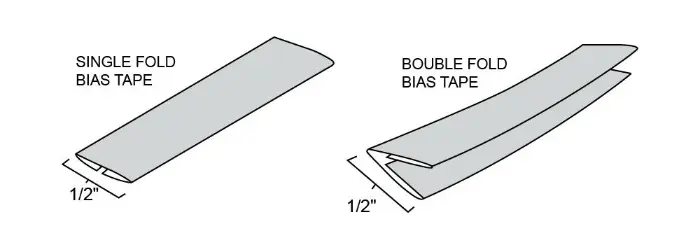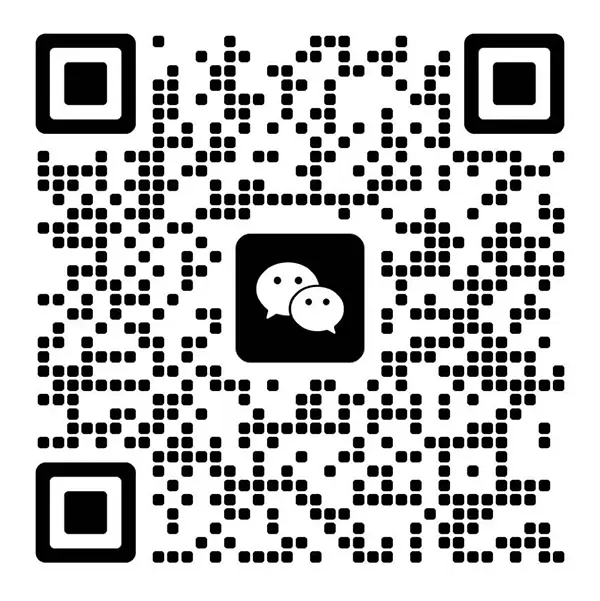When you start sewing, you often come across a term bias tape. Bias tape comes in two types: single and double-fold bias. At first glance, they both look alike. However, these bias tapes vary in several terms, from functions to design. Thus a debate arises over: single fold vs double fold bias tape.
Choosing the right bias tape is crucial whether you are sewing clothes or considering home decor. It will make your handicraft clothes cleaner and look professional. In this article, I will explain the differences between them in the simplest possible way. So, let’s get started!
Overview of Bias Binding Tape
Before discussing bias tape types and their differences, let’s first discuss what bias tape means.
It is a strip of fabric cut on the bias. The word bias means diagonal line. When you cut any fabric at 45-degree angles, it becomes diagonal and is known as bias tape. Generally, cutting a fabric straight makes it stiff and does not bend easily. But when you cut the fabric diagonally, it becomes stretchy and flexible.
This allows you to bend and curve it easily around the corners. Many people use bias tape to give a finished look to the raw edges of clothes. Bias comes in various sizes, widths, styles, and colors. You can buy it already made in stores or make it at home.
Bias tape is one of the most useful sewing notions and can be used to neaten and trim almost anything. It is perfect for a decorative finish on a curved edge because the bias will bend and ease around the curve. There are two basic type of bias tape: single fold bias tape and double fould bias tape. Then what’s the difference between them?
How to Sew Bias Tape?
HOW? First, pick a fabric of your choice and needs and iron it to become flat and smooth.
After that, fold one corner of the fabric to the opposite edges and make a triangle. This fold is a bias line (diagonal line). With the help of a ruler, mark this line with fabric chalk. However, you can adjust the width of this line according to your needs. Now, cut our bias strip along this line slowly. As a last step, fold this tape with the help of an iron or bias tape maker tool.
What is Single Fold Bias Tape?
Single fold bias tape has two folds. It is made from strips of fabric cut on the bias (diagonal) and folded in on each edge to meet in the middle. Store-bought single fold bias tape is conveniently wound around a piece of cardboard for neat storage.
The most commonly used width is 1/2 inch which is used for finishing necklines and armholes. You can choose to sew the bias tape so it is hidden on the inside of the garment or on the outside for an attractive contrast look.
A bias tape folded once on both long sides is called a single-fold bias tape. In this tape, each edge of the long side is folded toward the center. Overall, it has one fold on each side of the fabric strip and a flat back in the middle. So, single-fold bias tape mainly covers one side of the fabric, not both. This means you can use it when you want to cover the outer messy edges of your fabric.
For back and inner side coverage, this tape is not suitable. However, this type of bias tape is very straightforward to sew. WHY? Because you have to sew only one side of the fabric. For example, simply place it on the edges of your fabric and sew along the fold line. Therefore, it is primarily used in the neckline, armholes, or hem.
What is Double Fold Bias Tape?
Double–fold bias tape has three folds. It is folded on the edges like single fold tape and then folded in half again making it easier to wrap around the edges of your article.
Double-sided tapes are slightly wider on one side ensuring you catch in both sides when you are sewing. Once again the most commonly used size is 1/2 inch and 5/8 inch.
The type of bias tape folded two times is known as double-fold bias tape. This means this tape has two folds. The first fold is like a single-fold bias tape. For example, fold both long sides to the center. After that, fold the whole strip again in half. This extra fold is what makes it different from single-fold tape and makes it stronger and thicker.
If we talk about coverage, this tape covers both sides of the fabric edges. HOW? During sewing, you have to place the fabric edges inside the folded tape. One part of the tape will cover the front side, while the second part will cover the back side of the fabric. Then, start sewing through layers, and you will get neat, strong, and safe fabric edges.

Single Bias Tape vs Double Bias Tape: 5 Key Differences
Do you have a basic idea of bias tape and its types? If yes, let’s explore the key distinctions between single and double-fold bias tape.
1- Number of Folds
Single-fold bias tape is folded only once. So, it has one fold on each side of the fabric strip. On the flip side, double-fold bias tape is folded two times. First, it is folded toward the center. Second, the whole strip is folded in half. It creates three layers. So, mainly, it has two folds.
2- Thickness of Bias Binding Tape
Single-fold bias tape is thinner due to one fold of fabric. Moreover, it has a single layer of fabric, which makes it lighter and less bulky. Conversely, double-fold bias tape has two folds, which makes it thicker. As you know, it creates three layers, so it is heavier.
3- Coverage of Fabric Edge
Single-fold bias tape has less coverage. WHY? Because it has only one fold that can cover only one side of the fabric. However, double-fold bias tape has two folds. These folds can cover both the outer and inner edges of the fabric. So, overall, it offers more coverage for fabric edges.
4- Final Look
The final look and appearance mainly depend on the coverage. If we discuss single bias tape, it covers one side only. After stitching, it might show inner raw edges, which can affect the overall finish. On the other hand, double-fold bias tape has more coverage. It covers both the inner and outer edges of the fabric side. So, after stitching, it provides a more delicate and neat look.
5- Common Uses
The usability of both types varies due to the overall look and coverage. For example, single-fold bias tape is used where only one side needs to look neat. So, you can use it for necklines, hems, and pillow covers. On the reverse side, double-fold bias tape provides a more finished look and durability. It is mainly used in quilts, blankets, and home decor projects.
6- Price & Affordability
The single-fold bias tape is inexpensive. The reason is that it consumes fewer fabrics and is made through single folding. This tape remains inside the cloth (on. Remember, its cost-effectiveness comes with a drawback, which is compromised durability. It won’t offer optimal strength.
On the other hand, the double-fold bias tape is premium and very expensive. It remains inside of the clothing and looks very eye catchy. Moreover, it is very strong and can bear rough usage. Regarding suitability, I consider single-fold bias tape suitable for projects with tight budgets. Similarly, the double-fold bias tape is the best option for premium projects where aesthetics and look matter.
Conclusion
Bias tape is a popular narrow fabric strip with folded edges. This tape comes in two main types: single and double-fold bias tape. At first, these tapes look the same but vary in several aspects. In this article, I have discussed the main differences between them. For example, single-fold tape has one layer and one fold. It is thinner and covers one side of the fabric edge.
So, it is mainly used in pillows, covers, and necklines. On the flip side, double-fold bias tape has three layers and two folds. It is thicker and more durable. It provides more coverage and covers the fabric edge’s front and back sides. For this reason, it is mainly used when more perfection and a neat look are needed.

